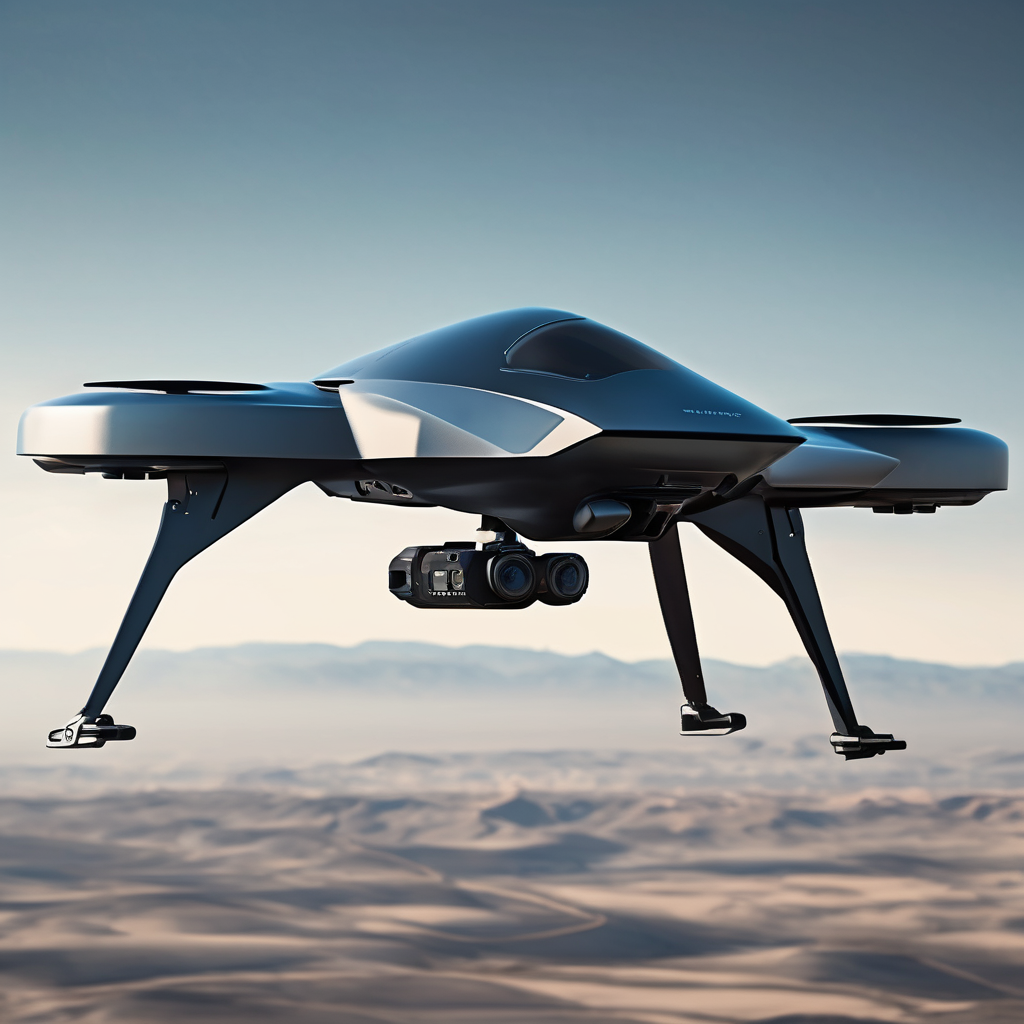Shield AI has unveiled its latest innovation, the “X-BAT,” which aims to enhance military capabilities in the crowded field of Collaborative Combat Aircraft (CCAs). The X-BAT is distinguished by its dual ability for vertical takeoff and landing (VTOL) as well as its supersonic speed, making it a notable contender in modern aerial warfare.
According to the company, the X-BAT features a stealthy cranked-arrow shape and boasts a range exceeding 2,000 nautical miles, allowing for its deployment from various platforms including ships, islands, and austere locations. The aircraft is classified as a 4G airplane, capable of reaching altitudes of 50,000 feet, and presents a combat radius of 1,000 nautical miles.
The U.S. Air Force has invested in the development of CCAs over recent years—aircraft designed to operate alongside manned fighters in combat scenarios. While Shield AI has not confirmed its participation in the Air Force’s Increment 2 development phase, the company has started engaging with potential customers, which seem promising according to their Senior Vice President of Aircraft Engineering, Armor Harris.
The military interest in CCAs extends beyond the Air Force, with branches like the Army and Navy exploring similar technologies, as well as interest from allied countries such as Australia, the Netherlands, and the United Kingdom.
One key component driving the X-BAT’s capabilities is its Hivemind software, designed to enable AI-driven autonomy in GPS- and communication-restricted environments. This feature allows the X-BAT to effectively collaborate with manned aircraft in complex combat scenarios. Notably, the General Atomics’ entry, the YFQ-44A, also employs the Hivemind system.
Shield AI, with previous experience in drone technology through its smaller V-BAT model used in Ukraine, is currently seeking partners for the production of the X-BAT airframe and propulsion system, with announcements expected soon. A first flight utilizing its VTOL capabilities is scheduled for next year, while a comprehensive demonstration is anticipated by 2028.
The aircraft is powered by a choice of either a Pratt & Whitney F100 or a GE Aerospace F110 engine, which are also used in F-15 and F-16 fighters. This decision is aimed at providing the X-BAT with both reliability and logistical efficiency. The projected cost of the X-BAT is approximately $27 million, aligning with early Air Force expectations for CCA pricing.
The potential versatility of the X-BAT aligns well with the Air Force’s Agile Combat Employment model, which focuses on agile unit operations from diverse locations to complicate enemy targeting strategies. Shield AI’s president and co-founder, Brandon Tseng, highlighted the strategic importance of airpower that can operate without traditional runways, stating that it enhances forces’ persistence, reach, and survivability.
The X-BAT is designed for a variety of missions, including strike, counter-air, electronic attack, and intelligence, surveillance, and reconnaissance tasks. Additionally, it will feature adaptive tactics for improved survivability and the ability to operate under fluctuating communication conditions. This open-architecture design will allow for future integrations with various technological advancements.
With dimensions similar to an F-5 fighter, the X-BAT can be launched and recovered vertically on a mobile trailer and is capable of carrying a range of munitions, including the AIM-120 AMRAAM and the Navy’s AIM-174B “Gunslinger” missile. Shield AI plans to produce multiple launch-and-recovery trailers to enhance operational flexibility.
The emergence of the X-BAT adds yet another dimension to the evolving landscape of CCAs, following announcements from competitors like Lockheed Martin, which recently introduced its “Vectis” stealth drone, and the Sikorsky unit’s “Nomad” family of rotor-propelled CCAs.
This development represents a significant step forward in military aviation, bringing forward innovative solutions that promise to redefine aerial combat and strategic defense capabilities.
